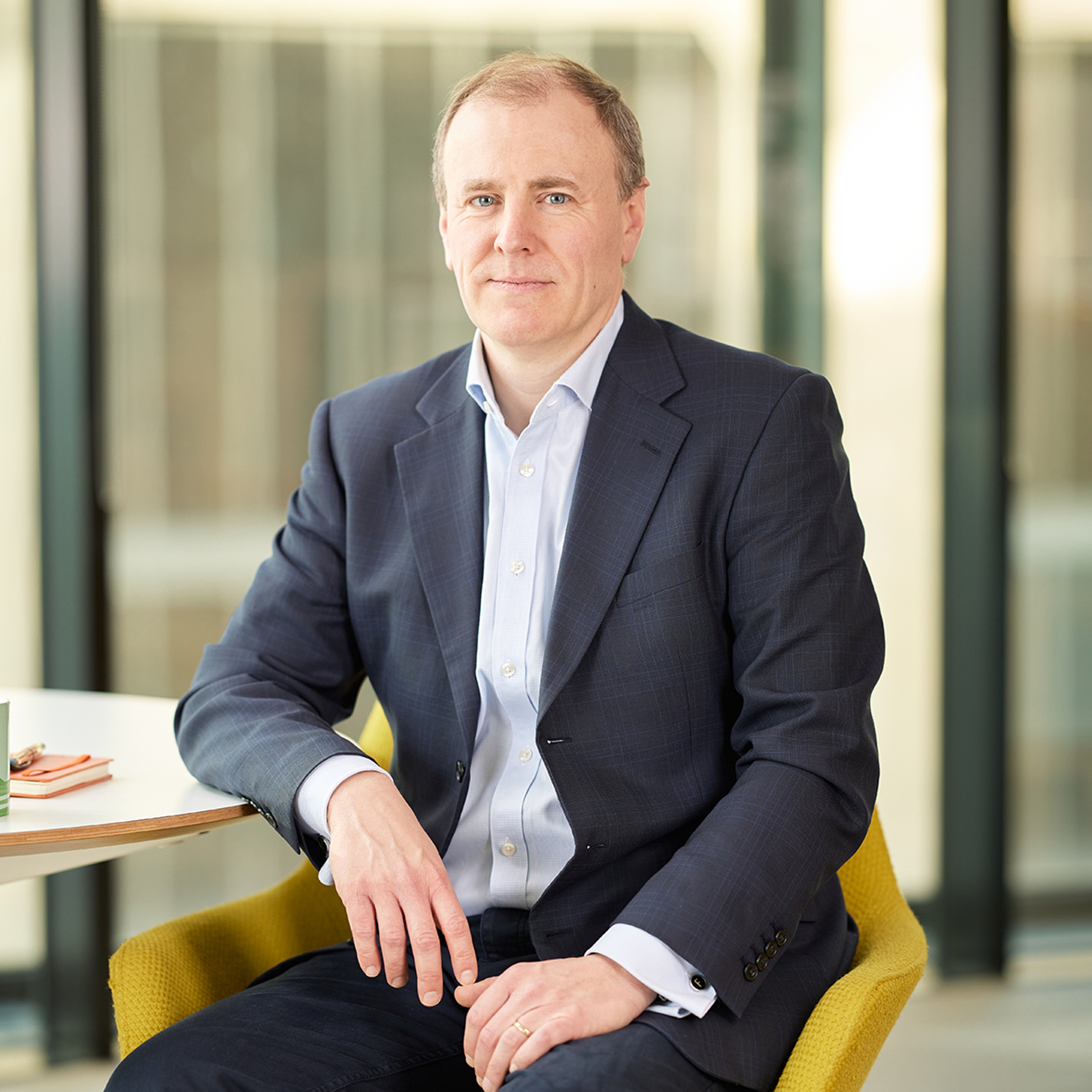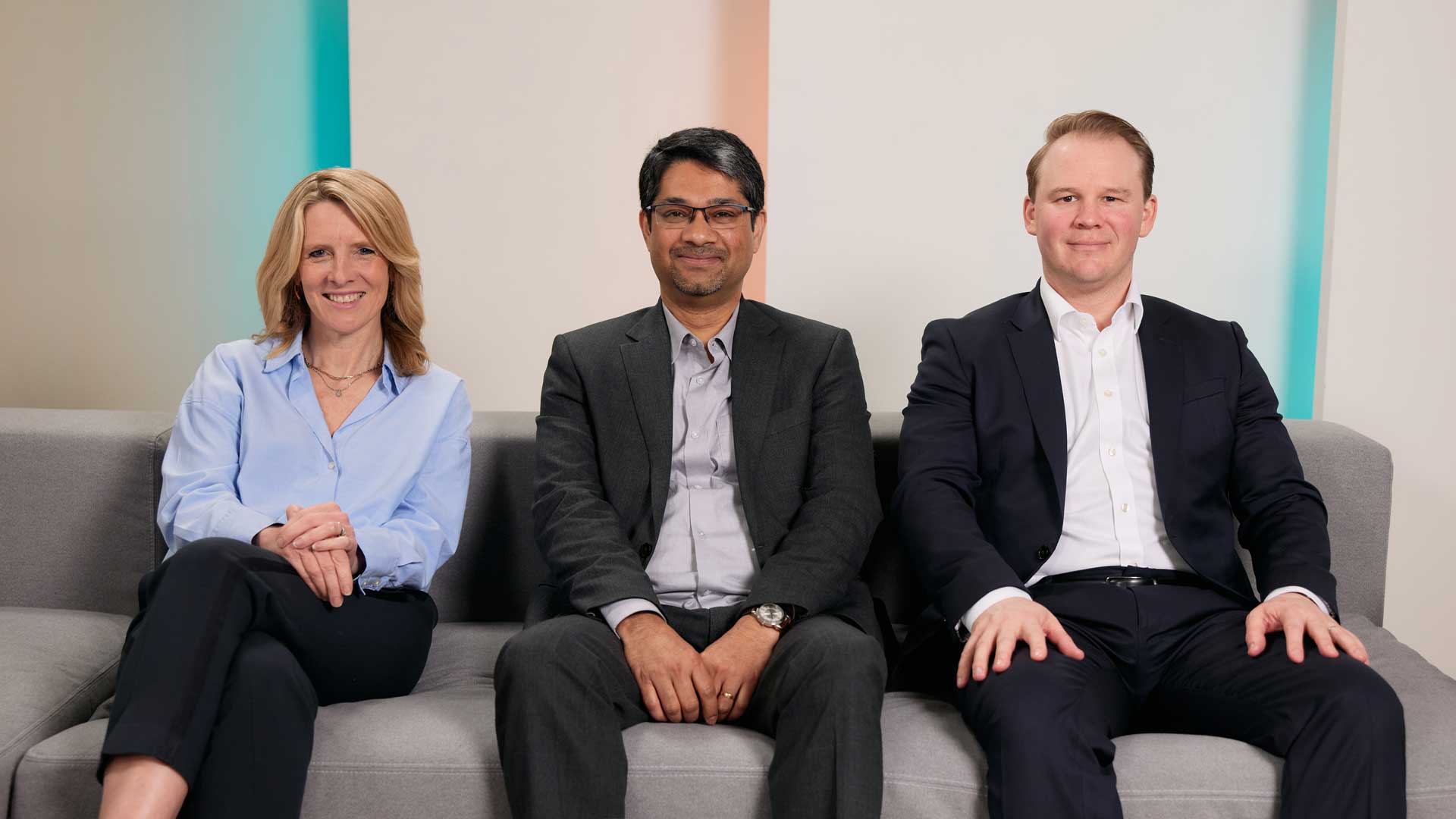
All investment strategies have the potential for profit and loss, your or your clients’ capital may be at risk.
With SAINTS celebrating its 150th anniversary this year, we have been pausing to look back. Baillie Gifford was appointed investment manager by the board of the company in 2004. Financial markets were recovering from the dot-com crash, the UK was still in the EU and China was on its way to becoming a major driver of global growth after joining the World Trade Organisation in 2001.
In 2004, we inherited an equity income portfolio that was managed the traditional way: focusing on dividend yield, and with a heavy skew towards the UK market; 70 per cent of the equity portfolio was invested in London-listed stocks. We began a gradual process of moving the portfolio in a different direction: focusing on growth rather than yield and embracing global opportunities.
Today, SAINTS aims to provide its shareholders with a dependable source of income, together with growth in income and capital that exceeds inflation over time. To achieve these goals, our strategy is to allocate the majority of the assets to a portfolio of carefully selected global equities.
Back in 2004, SAINTS’ competitors could essentially be regarded as its peer group of UK equity income Funds and Global Equity Income Investment Trust. So, what happened next? The accompanying chart shows the income and capital growth delivered by SAINTS since 2004, compared with 48 comparable funds which are still going today. Of these, we were particularly interested in the 22 funds which yielded above 4 per cent back in 2004. These income funds had an average dividend yield of 5 per cent, which was approximately 33 per cent higher than SAINTS’ 3.8 per cent yield.
Nominal returns on £10,000 invested 2004–2022
Peer Group with yield >4% (left) vs, SAINTS (right)
Despite its lower starting yield, over the period SAINTS shareholders have received more income than people who invested in the average yield-focused fund. Not by a wide margin, but the increase in dividends from SAINTS has more than compensated for the significantly lower starting yield.
More strikingly, there is a stark difference in capital growth. SAINTS shareholders have seen their capital grow by many multiples of the higher-yielding funds. An investment of £10,000 in 2004 delivered £24,000 of capital growth for SAINTS, compared with £6,300 for those yield-focused funds.
Adding both income and capital growth to their initial investment, SAINTS shareholders would have seen that initial investment grow by 4.6x to £46,942, whereas an investor in the average higher-yielding UK income fund would have seen their initial investment grow by 2.8x.
We draw three conclusions from these numbers:
- A focus on dividend growth, rather than yield, does not mean shareholders receive less income than high-yielding strategies over the long term.
- These outcomes give credence to our belief that investing in companies that can compound their dividends relentlessly over long periods of time – the SAINTS approach – has the potential to deliver much higher capital growth. Relentless compounding of dividends requires relentless compounding of earnings, which drives share price appreciation and results in growth.
- Investing globally provides benefits. Of course, many UK-listed companies are global businesses, tapping into growth in other parts of the world. But the much wider universe of global opportunities provides much better odds of finding those relentless compounders.
Note that we have assumed, in our calculations, that investors were choosing to receive and consume their income, rather than to reinvest it into new shares of SAINTS. If we crunched these numbers again but assumed reinvestment of dividends into new shares, we suspect the gap in outcomes would be even wider. Given SAINTS’ much more substantial capital growth, many SAINTS shareholders choose to reinvest their dividends into new SAINTS shares.
Long-term compounders
Around 2013, Baillie Gifford expanded the team managing SAINTS. This gave us the resource to search the world for even more of the dividend compounders we seek. It also gave us an opportunity to stop and think about our investment approach. We decided to double down. SAINTS leaned further into growth and away from higher-yielding equities.
Looking back on the companies owned in the portfolio in 2013 – many of which we still hold today – we can see several examples of the growth stocks that have underpinned SAINTS’ income and capital growth. The table below shows the 10 best-performing holdings that we have held continuously for the past decade.
| Company | Cumulative total return GBP (%) |
Compound annual growth rate sales (%) |
Compound annual growth rate earnings per share (%) |
Compound annual growth rate total return GBP (%) |
| Apple | 1820 | 10 | 14 | 34 |
| Microsoft | 1312 | 10 | 13 | 30 |
| TSMC | 715 | 16 | 20 | 30 |
| Analog Devices | 545 | 16 | 20 | 20 |
| Partners Group | 466 | 15 | 14 | 19 |
| Atlas Copco | 403 | 8 | 9 | 18 |
| McDonald’s | 373 | (2) | 7 | 17 |
| Rio Tinto | 281 | 3 | 6 | 14 |
| Pepsi | 260 | 3 | 5 | 14 |
| UPS | 234 | 6 | 11 | 13 |
Some of the returns here are extraordinary. Investments such as Apple, Microsoft, TSMC, Analog Devices, Partners Group and Atlas Copco have all delivered share price appreciation better than 15 per cent per annum, in local currency terms. After we add dividends into the equation, total returns have been even higher: 20 or 30 per cent per annum in some cases. That means, taking the example of Microsoft, $1,000 invested 10 years ago is worth about $11,800 today.
The foundation beneath these total returns has been each company’s ability to maintain strong revenue and earnings growth. By concentrating on companies that we believe have the potential to consistently increase their earnings at attractive rates, such as TSMC and Analog Devices with an estimated annual growth of around 20 percent, we have found that share price appreciation has broadly followed.
Of course, not all our investments have been as successful, and we focus here on the companies which have delivered outstanding growth. Some companies will have grown at a more pedestrian pace, and for some others, our investment thesis was proven wrong and they have had disappointing returns.
And today, in 2023, we believe more strongly than ever in our approach: focusing on resilient companies able to compound their earnings and dividend growth in the long term. By looking for these companies globally, rather than narrowing our horizons to the particular island we’re based on, we dramatically raise our odds of finding the next Atlas Copcos and Apples of the world. Over the long term, we believe the laws of compounding make this approach highly likely to deliver better results to shareholders.
Risk factors
This communication was produced and approved in October 2023 and has not been updated subsequently. It represents views held at the time of writing and may not reflect current thinking.
This article does not constitute, and is not subject to the protections afforded to, independent research. Baillie Gifford and its staff may have dealt in the investments concerned. The views expressed are not statements of fact and should not be considered as advice or a recommendation to buy, sell or hold a particular investment.
Baillie Gifford & Co and Baillie Gifford & Co Limited are authorised and regulated by the Financial Conduct Authority (FCA).
Baillie Gifford & Co Limited is authorised and regulated by the Financial Conduct Authority. Baillie Gifford & Co Limited is the authorised Alternative Investment Fund Manager and Company Secretary of the Scottish American Investment Company P.L.C.. A Key Information Document for the Trust is available at bailliegifford.com
The Trust invests in overseas securities. Changes in the rates of exchange may also cause the value of your investment (and any income it may pay) to go down or up.
The Trust invests in emerging markets where difficulties in dealing, settlement and custody could arise, resulting in a negative impact on the value of your investment.
The Trust can borrow money to make further investments (sometimes known as ‘gearing’ or ‘leverage’). The risk is that when this money is repaid by the Trust, the value of the investments may not be enough to cover the borrowing and interest costs, and the Trust will make a loss. If the Trust’s investments fall in value, any invested borrowings will increase the amount of this loss. The Trust can buy back its own shares. The risks from borrowing, referred to above, are increased when a trust buys back its own shares.
Share prices may either be below (at a discount) or above (at a discount) or above (at a premium) the net asset value (NAV). The Company may issue new shares when the price is at a premium which may reduce the share price. Shares bought at a premium may have a greater risk of loss than those bought at a discount.
Market values for securities which have become difficult to trade may not be readily available and there can be no assurance that any value assigned to such securities will accurately reflect the price the Trust might receive upon their sale.
The Trust can make use of derivatives which may impact on its performance.
The Trust has some direct property investments, which may be difficult to sell. Valuations of property are only estimates based on the valuer’s opinion. These estimates may not be achieved when the property is sold.
Corporate bonds are generally perceived to carry a greater possibility of capital loss than investment in, for example, higher rated UK government bonds. Bonds issued by companies and governments may be adversely affected by changes in interest rates and expectations of inflation. The Trust is listed on the London Stock Exchange and is not authorised or regulated by the Financial Conduct Authority.
This information has been issued and approved by Baillie Gifford & Co Limited and does not in any way constitute investment advice.
| 2019 | 2020 | 2021 | 2022 | 2023 | |
| The Scottish American Investment Company P.L.C. (SAINTS) | 13.6 | 8.7 | 16.3 | -7.2 | 12.8 |
| NAV* | 12.9 | 7.9 | 19.7 | 4.5 | 7.3 |
| FTSE All-World Index | 7.8 | 5.7 | 22.7 | -3.6 | 11.1 |
| 1 Year | 3 Years | 5 Years | 10 Years | |
| Share Price | 12.8 | 21.9 | 50.5 | 175.2 |
| NAV* | 7.3 | 34.2 | 63.5 | 201.5 |
| FTSE All-World Index | 11.1 | 31.3 | 49.6 | 189.5 |
Performance source: Morningstar, FTSE. Share price, total return in sterling. *Capital and income with borrowing at fair.
| Year to June | 2019 | 2020 | 2021 | 2022 | 2023 |
| Dividend Per Share (p) | 11.70 | 12.00 | 12.125 | 13.20 | 13.92 |
| Year on Year Change (%) | 3.5 | 2.6 | 1.0 | 8.9 | 5.5 |
Source: Refinitiv/Baillie Gifford & Co.
Performance source: Morningstar, FTSE. Share price, total return in sterling.
Notices Source: London Stock Exchange Group plc and its group undertakings (collectively, the ‘LSE Group’). © LSE Group 2023. FTSE Russell is a trading name of certain of the LSE Group companies. ‘FTSE®’ ‘Russell®’, is/are a trade mark(s) of the relevant LSE Group companies and is/are used by any other LSE Group company under license. All rights in the FTSE Russell indexes or data vest in the relevant LSE Group company which owns the index or the data. Neither LSE Group nor its licensors accept any liability for any errors or omissions in the indexes or data and no party may rely on any indexes or data contained in this communication. No further distribution of data from the LSE Group is permitted without the relevant LSE Group company’s express written consent. The LSE Group does not promote, sponsor or endorse the content of this communication. Past performance is not a guide to future returns.
Ref: 58429 10035685





